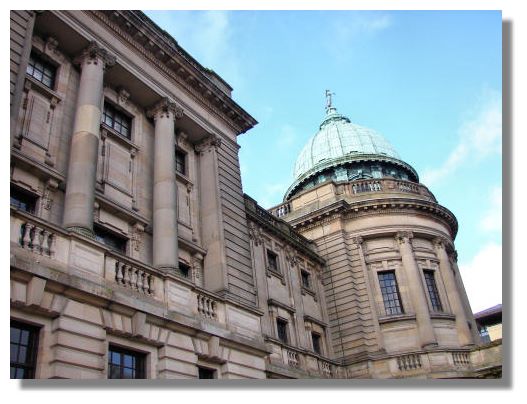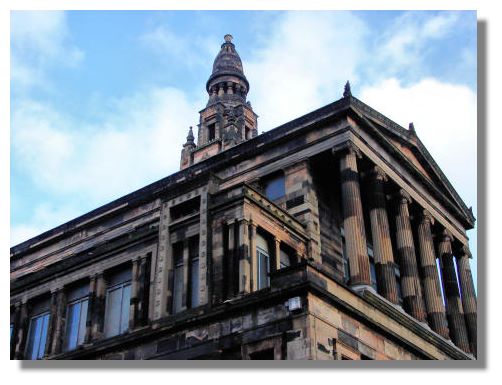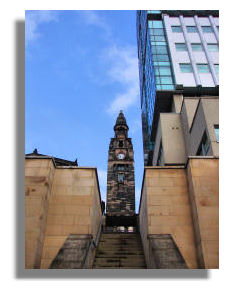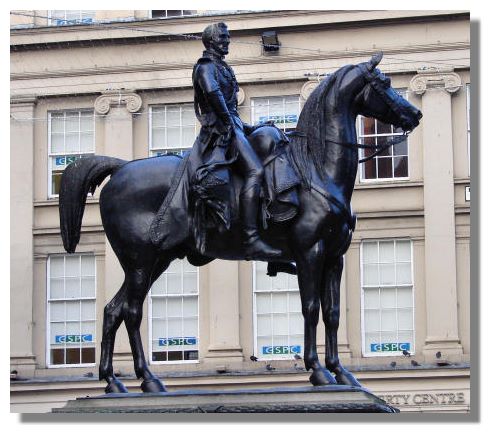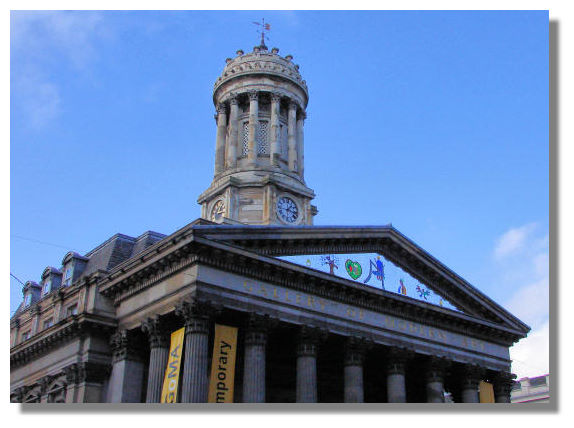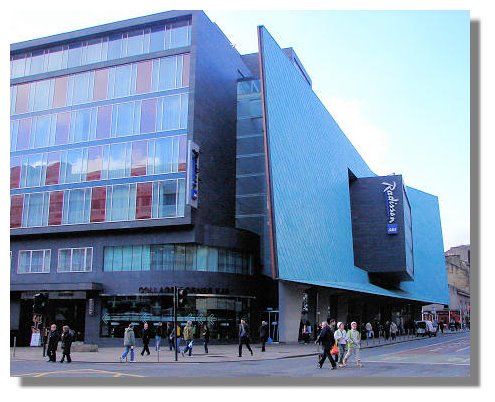Each week the Rampant Scotland Newsletter includes a number of photographs which illustrate the weather and the seasons, plus the flora and fauna of the current week around Scotland. There are often so many such graphics of Scottish subjects worth including that this separate "colour supplement" is created where some of the best pictures can be displayed in a larger format. Here is this week's crop of Scottish views - all taken in Glasgow.
The impressive Mitchell Library in Glasgow has recently undergone a major makeover, making the facilities even more appropriate for the 21st century, with more high-tech equipment. This is one of the largest lending libraries in Europe with over 1.3 million books and is a popular place for students to do their research. New features include a new contemporary reception area that provides access to Internet and information facilities, a high quality café bar, a new community library and upgraded conference facilities. The "Glasgow Room" has a world-renowned collection telling the story of Scotland's largest city. The City’s archives held here date back to the 12th Century and there is a fantastic collection of rare books and manuscripts. The Mitchell Library was founded in 1877 with a bequest from the estate of tobacco merchant Stephen Mitchell (1789 - 1874). The current building was built between 1906 - 11 with further extensions in 1939 and 1981.
When Alexander "Greek" Thomson designed this church on a sloping site on St Vincent Street for the United Presbyterians, he had Solomon's Temple in mind; surprisingly, the austere Presbyterians went along with the design. Built on a steep slope, the Grecian columns, powerful tower and massive plinths are covered in Egyptian and Graeco-Roman motifs. The church rises above the encircling office blocks both physically and metaphorically. But the tatty post-war buildings do cut off many of the fine perspectives of the church. However, when one of the office blocks that encroach on this building was being pulled down and replaced, the architect had the decency to include a passageway and stairs allowing a glimpse of that tower from the street below.
Many Glaswegians will look at this photograph of the statue of the Duke of Wellington in Royal Exchange Square and immediately point out that there is something missing - the traffic cone on Wellington's head that became such a feature of this fine equestrian statue. Every time it was removed, it magically reappeared. It became such a part of the city that when it was suggested that this vandalism should cease, there was an outcry - with the Lord Provost (roughly equivalent to Lord Mayor) leading the defence, arguing that it displayed typical Glasgow humour... Eventually, however, the damage being caused to Wellington's accoutrements (and the cost of repair) eventually led to efforts to bring the "tradition" to an end. I did notice, however, there was a traffic cone on the pavement nearby...
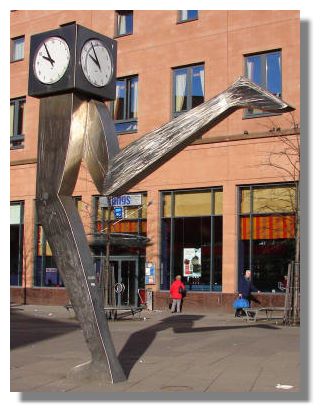
This modern sculpture of a clock with running legs is located very appropriately outside the Buchanan Bus Station, where the sight of passengers racing to catch a bus is not unknown!
The Gallery of Modern Art (GOMA) is housed in the centre of Glasgow in a building originally built as an elegant, Grecian-style mansion for an 18th century tobacco merchant who had made his fortune in America. It later became the Stirling Library, but in the early 1990s it became the Gallery of Modern Art. As such, it has become a very popular with local Glaswegians as well as tourists. See also Places to Visit - GOMA.
The city planners must have taken a deep breath when they approved the design of the Radisson SAS Hotel on Argyle Street. But they needn't have worried - the striking, £45 million hotel has picked up quite a number prizes, including the UK-wide Architectural Award for the Best New Hotel as well as the Architectural Grand Prix and the Best Commercial Design at the Scottish Design Awards. But Glaswegians, who are hard to impress, have nicknamed the building the "Big Green Blob."
If you want to look back at earlier editions of this Colour Supplement, there is an Index Page
